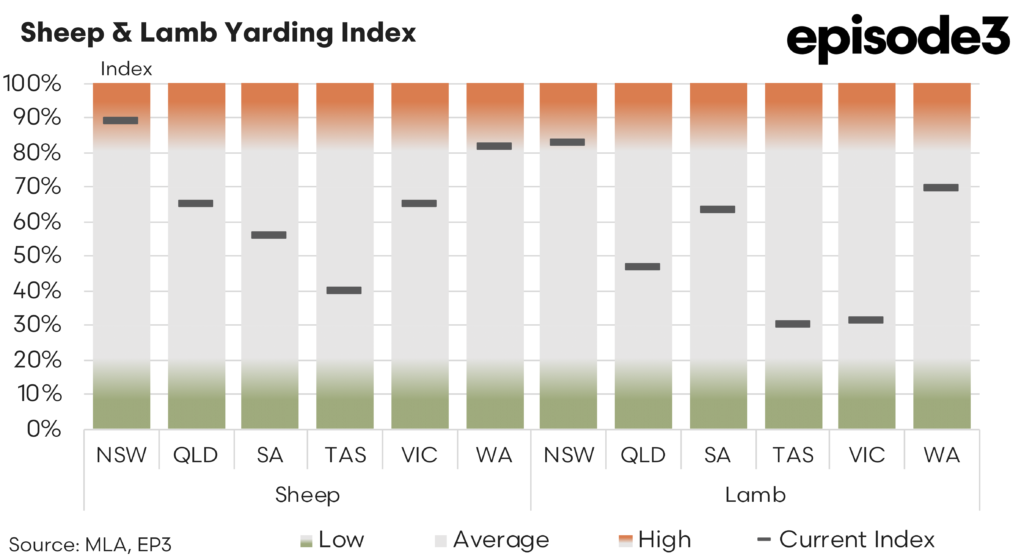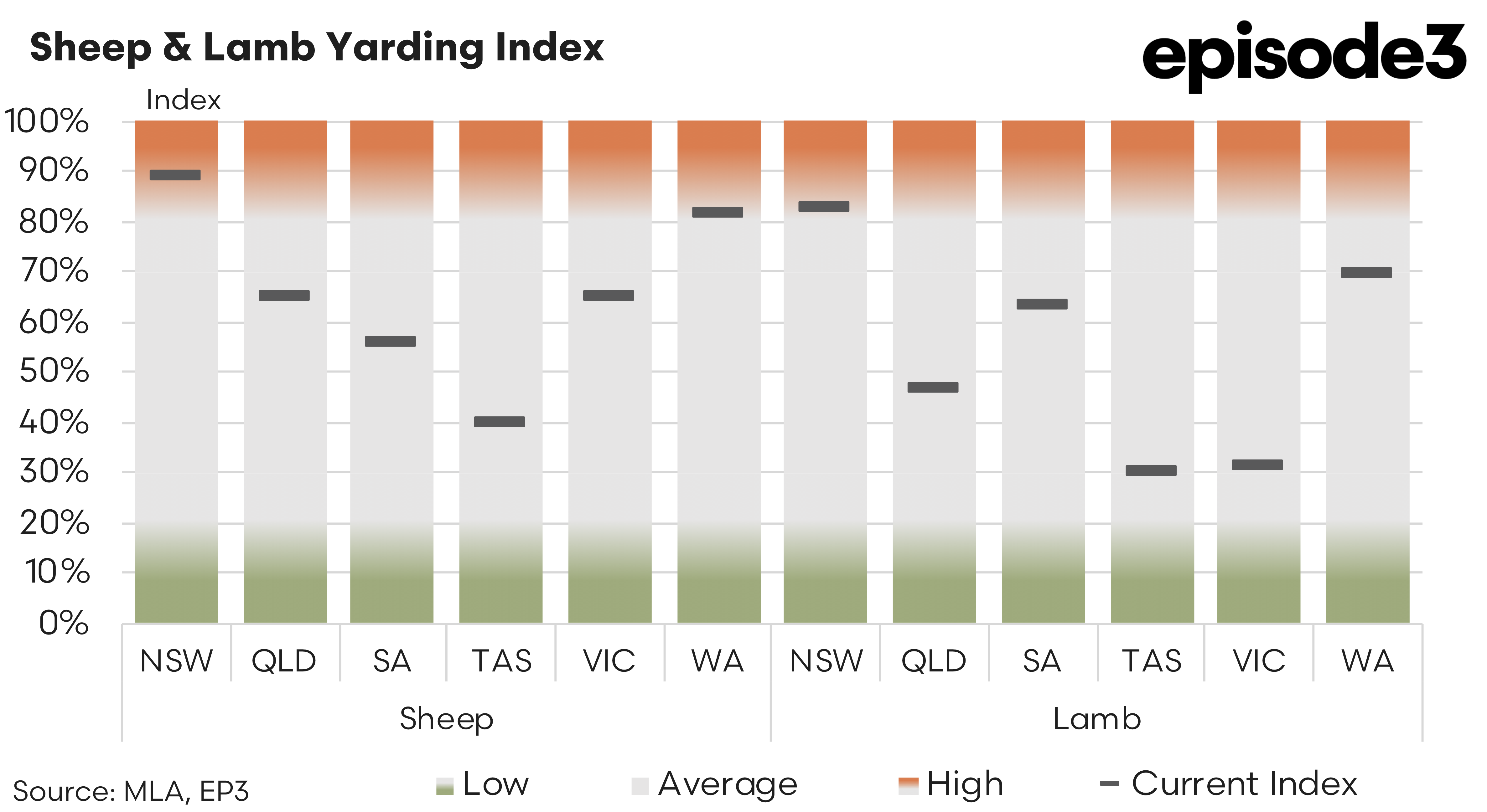Spring Lambs Start to Flow, Yet Demand Keeps Prices High

Market Morsel
Spring is normally the time when lambs begin to flow into saleyards in greater numbers, easing the tight supply conditions of winter. This year, however, the transition from September to October has been uneven across the states, creating a market where pricing responses differ sharply depending on whether supply has actually materialised. Yardings data for both sheep and lamb show a meaningful shift in activity in key producing regions, but the price movements over the past four weeks reveal that demand remains firm and in some categories is still outweighing supply despite the seasonal lift. The combination of rising throughput in some areas and continued tightness in others has created a complex picture for producers and processors alike.
For sheep, October saw a significant increase in the yarding index score compared with September in most states. New South Wales rose strongly from 72 per cent to 89 per cent, reflecting a clear lift in offloading of ewes and older stock. Victoria more than doubled its sheep yarding index score, moving from 33 per cent to 65 per cent as producers began bringing stock forward after an extended period of low supply. South Australia saw a smaller but still notable increase from 53 per cent to 56 per cent. Western Australia also firmed from 72 per cent to 82 per cent, showing that spring conditions and flock management decisions are beginning to translate into greater supply. Tasmania lifted marginally from 38 per cent to 40 per cent, remaining comparatively subdued. Queensland was the only state to ease, slipping from 71 per cent to 65 per cent, although this follows historically high levels in the previous month. Overall, the sheep market is moving into a period where supply is recovering, but the shifts have not been dramatic enough to put meaningful downward pressure on price.
Lamb throughput has been more varied. New South Wales slipped slightly from 85 per cent to 83 per cent, still operating at very strong levels. Queensland saw a sharp decline from 60 per cent to 47 per cent, suggesting that early lambs have dried up and producers may be holding stock to add weight. South Australia, by contrast, rose from 25 per cent to 63 per cent, marking one of the most rapid turnarounds as new season lambs began to move. Victoria increased from just 9 per cent to 31 per cent, still below typical spring levels but a sign that supply pressure is easing from extreme lows. Western Australia lifted from 61 per cent to 70 per cent, consistent with the flow of new lambs. Tasmania eased slightly from 35 per cent to 30 per cent. These movements indicate that while lamb supply is starting to build, it remains constrained in several regions, particularly Queensland, Tasmania and to a lesser extent Victoria.
The latest price data from MLA shows that despite higher head counts in several categories over the past four weeks, lamb and mutton values have softened only marginally or even risen in some cases.
Heavy lambs are currently priced at 1,138 cents per kilogram carcase weight, up 28 cents over the past four weeks. Trade lambs also gained 5 cents over the month, now sitting at 1,139 cents, reflecting stable demand. Merino lambs climbed 33 cents over the month to 1,013 cents, demonstrating solid processor interest as supply remains restricted. Light lambs are the exception, easing by just over 3 cents across four weeks to 1,044 cents, a shift that aligns with increased availability of new season lambs in places like Victoria and South Australia.
Restocker lambs were largely unchanged over the month at 1,105 cents, although week-on-week they fell slightly as more lambs became available in the yards. Mutton values fell by 38 cents over the month to 734 cents per kilogram, yet prices remain well above long-term averages, highlighting ongoing export and domestic demand.
The relationship between supply and price across September and October illustrates a market in transition. Finished stock supply is improving, especially in Victoria, South Australia and New South Wales, and heavy and trade lamb prices have responded by easing slightly. However, the decline has been modest, indicating processors are still competing for available stock. As Victorian and South Australian lamb yardings move closer to typical elevated spring levels into November and New South Wales maintains its strong throughput, downward pricing pressure will increase.


